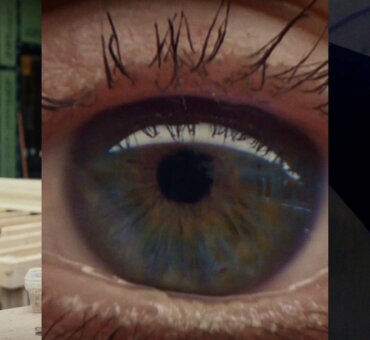With films garnering numerous accolades, including Cannes Lions, CICLOPE, ADC, and Clio Awards, acclaimed director Rune Milton is known for his ability to craft immersive worlds that resonate deeply with his audiences — even in worlds crafted for the Royal Ontario Museum, where a singing chimp roams the land.
Created in collaboration with Toronto-based agency Broken Heart Love Affair for the Royal Ontario Museum, “Opera” evokes a sense of wonder as it reimagines the connection between humans and nature and offers the audience a chance to experience the museum’s collection in a new, musical way.
Hear more from the master storyteller about the inspiration behind the project and why he turned to footage from Filmsupply to help nature become a character in the film’s storyline.
FILMSUPPLY: What served as the inspiration for this project for the Royal Ontario Museum?
Rune Milton: I received an inspiring brief from the agency Broken Heart Love Affair in Toronto.
The night before the call, I dreamed of seeing it all playing out.
When I woke up, I hammered down the script in minutes! It was intense and beautiful — like I had been born to do this.
The next day, I had the call. Often, you will just sit there and listen to the agency. But I instantly connected so well with the creatives.
We were reading the same books and watching the same films, and it all felt right. So, I asked if I could share this dream of the project.
They went for the idea of setting it in nature’s museum, and I then jumped around my house while describing the chimp’s backstory, the film in its entirety, and the music.

How did you begin to build on the concept of a singing chimp? Did the direction or anything about the project change over time?
We started by composing the music, aiming for a modern, epic sound that would feel integrated with the story.
We also wanted to avoid a stiff CG look, so we shot on real locations and found Jennifer Rose, a choreographer and dancer who brought incredible emotional depth to the role.
Through precise choreography and improvisation, we blended her performance with the music, capturing the emotional beats we needed.
Most of the animation was based on her work, which made the film feel dynamic and real.
Details changed throughout. But the goal was always really clear, and the choreography and music were all defined before the shoot.
And with this insane amount of CG, it had to be precise.

“From landscapes to animals and abstract shots, Filmsupply helped us tell the story in a poetic and cinematic way.”
Rune Milton
When or how did you decide it was time to look into outsourcing footage for a project?
Since Filmsupply was involved early on, their footage influenced the project from the start. Some sequences we shot ourselves, while others, like wide shots or scenes in places we couldn’t film, came from Filmsupply.
Utah provided an amazing landscape, but we also needed footage of glaciers, oceans, and other environments, which we sourced from Filmsupply.
Their high-quality clips integrated seamlessly with our own.
RELATED: How Stink Studios Built a Grammarly Campaign Entirely Out of Filmsupply Footage
How did Filmsupply’s footage contribute to the project for the Royal Ontario Museum?
Filmsupply’s footage was essential in shaping the project for the Royal Ontario Museum.
We downloaded hundreds of clips, and the quality was consistently excellent. It wasn’t about filling gaps but about building the structure of the film.
From landscapes to animals and abstract shots, Filmsupply helped us tell the story in a poetic and cinematic way.

You used a lot of epic landscape and nature shots in this project. How did nature itself serve as a character in this storyline?
Nature represents the evolution from the Big Bang to the present day.
We used colors and textures to reflect that journey, moving through different landscapes like deserts, mountains, and oceans.
The chimp reacts emotionally to its surroundings, exploring the world and its history.
We wanted to keep the timeline fluid, with nature telling its own story through its various stages of creation.
Why did you decide to show this story from the perspective of a singing chimp?
This was part of the agency’s original idea — using a singing chimp.
But instead of the original opera house setting, I felt it needed to avoid humanity entirely and focus on nature.
Utah’s surreal, unearthly landscape became “nature’s theater,” where the chimp, as the closest relative to humans, could embody both the physical and spiritual aspects of the story.
A singing chimp was the perfect choice to make us reflect on our connection to the natural world.
READ MORE: A Deep Dive into Evolve’s Underwater Cinematography






